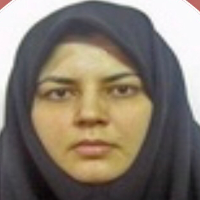The comparative narratology of Maghame and Picaresque's Genres
Author(s):
Abstract:
Introduction
Maghame is a kind of narrative which focuses on the poor and beggars wants and tricky literary men with an ornate prose. Also, Picaresque is a kind of episodic narrative which explains events happening for low class people of society or criminals, or the roguish central character fighting for survival of fittest permanantly. These involvements may take place at all social levels and typically present a humorous and wide-ranging satire of a given society.Theoretical framework: The purpose of this article is to distinguish and discover common characteristics of Maghame and Picaresque which leads to prove that Picaresque is under influence of Maghame.
Methodology
Through descriptive and comparative method, the data is gathered and analyzed. Also, narratology is the most important method by which narrative elements in two genres were compared.Results And Discussion
It can be concluded that both of them are episodic, that isthey are the narrations of independent events (episodic fiction which are rendered together due to the occurrence for one central person). Furthermore, it is illusterated that the plot which is on the basis of a journey has a significant role in the structure of Picaresque and Maghame. On the basis of narrative perspectives or focalized criteria, it is distinguished that narrator and focalisor are the same but focalization and narrativity are different in Maghames narrations. In this kind of narratin character, focalizor is the narrator who concepts all theevents consistent with his or her beliefs and perceptions related to his or her age, whereas narrator- focalizor retolds events which had seen, conceptualized and believed in the past. Besides, both genres are the first person narratives, and consequently there is a dichotomy and gap between experiencing me and narrating I in them leading to two levels: action level and narrative level. The difference between these two levels is called narrative distance; therefore, the process of narrativity is an important part of story in itself. It brings about an irony between the quality of events narrated and the way of heros narration in both genres. The analysis of Maghames protagonist shows that protagonist is a tricky man pretending misery, poverty and need who wanders in streets alone or accompanied by feeble and naked children. In order to get a little money, with an eloquent speech he attempts to make people take pity on him. Exactly in Picaresque stories, this feature is highlighted. Picaro is Spanish for rouge. The Picaresques hero is commonly a low-born, but a clever individual who wanders into and out of various affairs of love, danger, and farcical intrigue. Under the influence of lifes special circumstances, Picaro believes in epicurism (i.e. the enchantment of mortal pleasures of the world). Thus, the themes of immoral issues and various tricks play a key role in Picaros world and his stand in this universe.As for the part ofthe storys mode, it is concluded that Maghames protagonist criticizes hypocricy in society, which he himself is its victim. He exaggerates others sins to justify himself and suggests that although he is not better than others, he is not worse than them definitely. Hence, the satire and critical viewpoint is a main feature of Maghame stories. The emphasis on satire reflects on the historical and social context of Islamic countries in the 4th century Hejri, which equals to the 10th AD; the period during which slaves not caliphs ruled over the government. Moreover, there is satire in Picaresque. Not only Picaro itself is satirized by the author, but also he himself satirizes others. This point enables Picaro to observe his negative characteristics in the mirror of others obviously. Satire in Picaresques stories signifies the historical and social context of Spain in the16th century. During this period, people believed in the hierarchy system as an undeniable fact. Hapsborg kings goal was the development of a great emperor. In order to conquere on these wars, they had to select troops among the roguishs. It was one of the reasons for increasing disorder and riot so that troops behaved like Picaros; some behaviorswere distributed in Europe in the late16th century, including idleness, barbarization, gambling, forgery, and cheating. Hence, under the influence of satire in these two genres, the story of the world is illustrated worse than our real world. In addition, the use of poetic and figurative prose and word plays are seen in these genres.
Conclusion and Suggestions: Thus, it is concluded that Picaresque in Spain is the revised, modified and evolutionary genre of Arabic Maghame. In fact, after Spain, it is distributed in the other nations. This result can be inferred from the common characteristics of these two genres, including plots, narrative focalization, an unheroic protagonist, mode and a prose which is full of poetic dictions, scientific and literary terms and lingual plays.
Keywords:
Language:
Persian
Published:
Journal of Arabic Language & Literature, Volume:8 Issue: 1, 2016
Pages:
83 to 105
magiran.com/p1672860
دانلود و مطالعه متن این مقاله با یکی از روشهای زیر امکان پذیر است:
اشتراک شخصی
با عضویت و پرداخت آنلاین حق اشتراک یکساله به مبلغ 1,390,000ريال میتوانید 70 عنوان مطلب دانلود کنید!
اشتراک سازمانی
به کتابخانه دانشگاه یا محل کار خود پیشنهاد کنید تا اشتراک سازمانی این پایگاه را برای دسترسی نامحدود همه کاربران به متن مطالب تهیه نمایند!
توجه!
- حق عضویت دریافتی صرف حمایت از نشریات عضو و نگهداری، تکمیل و توسعه مگیران میشود.
- پرداخت حق اشتراک و دانلود مقالات اجازه بازنشر آن در سایر رسانههای چاپی و دیجیتال را به کاربر نمیدهد.
In order to view content subscription is required
Personal subscription
Subscribe magiran.com for 70 € euros via PayPal and download 70 articles during a year.
Organization subscription
Please contact us to subscribe your university or library for unlimited access!



